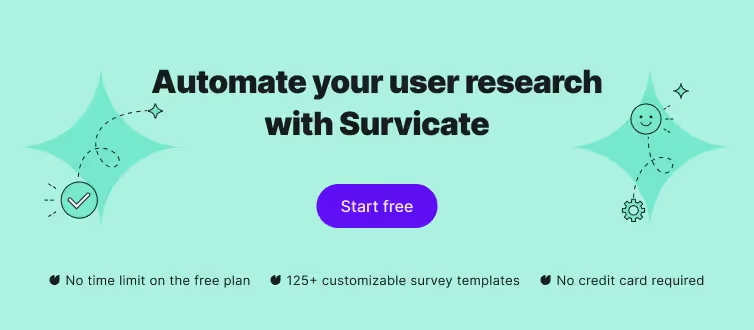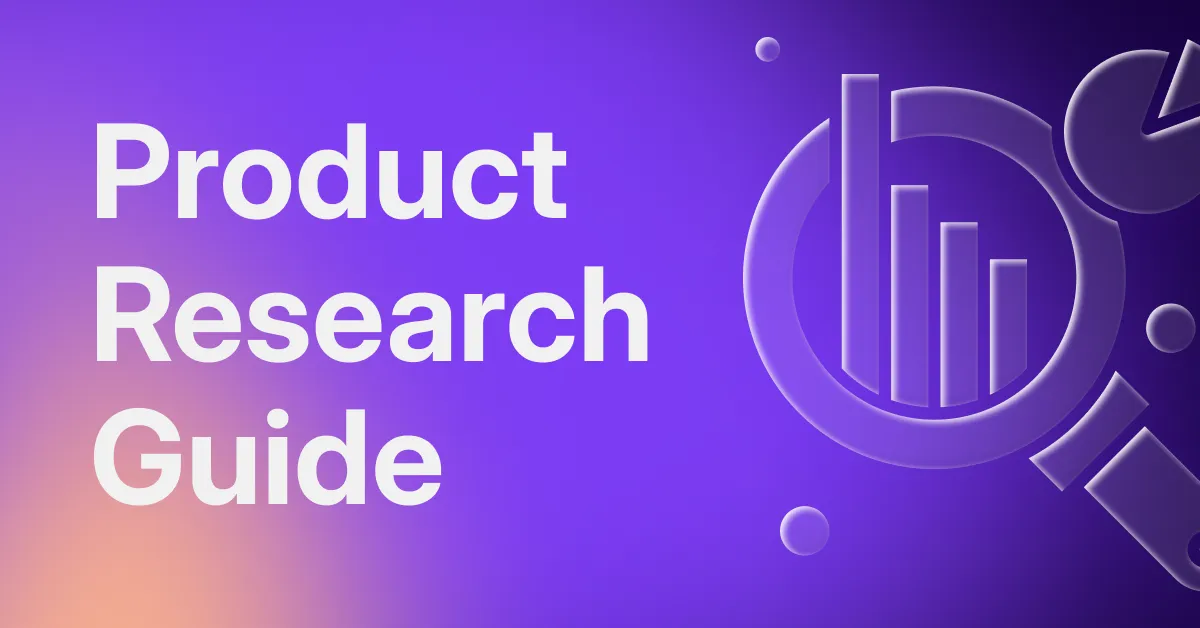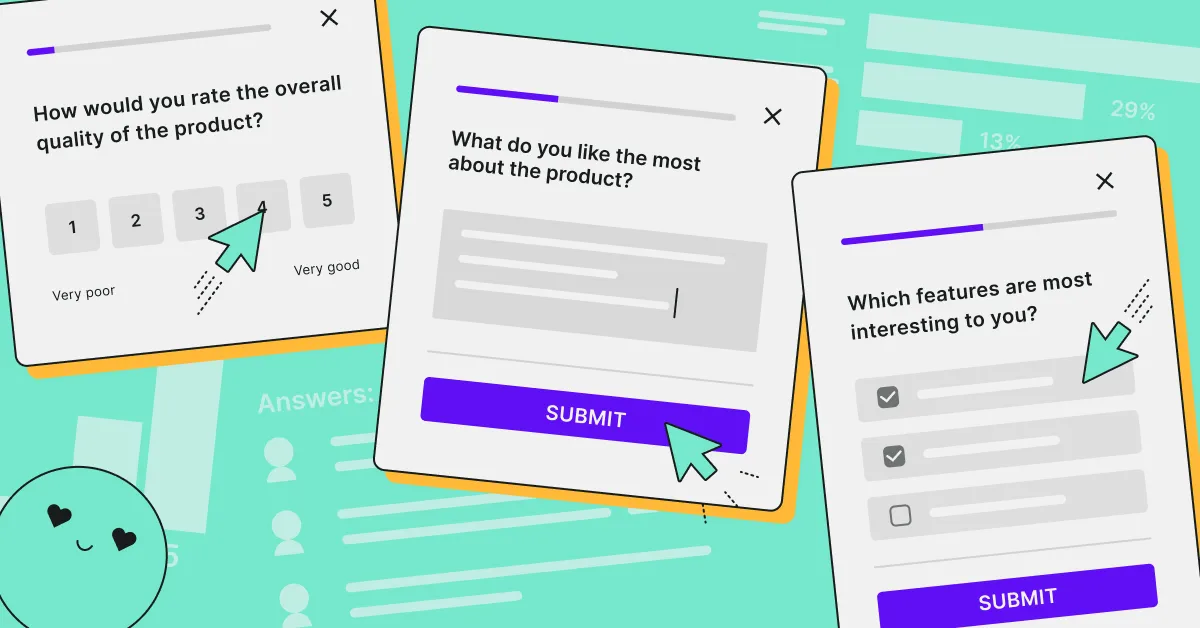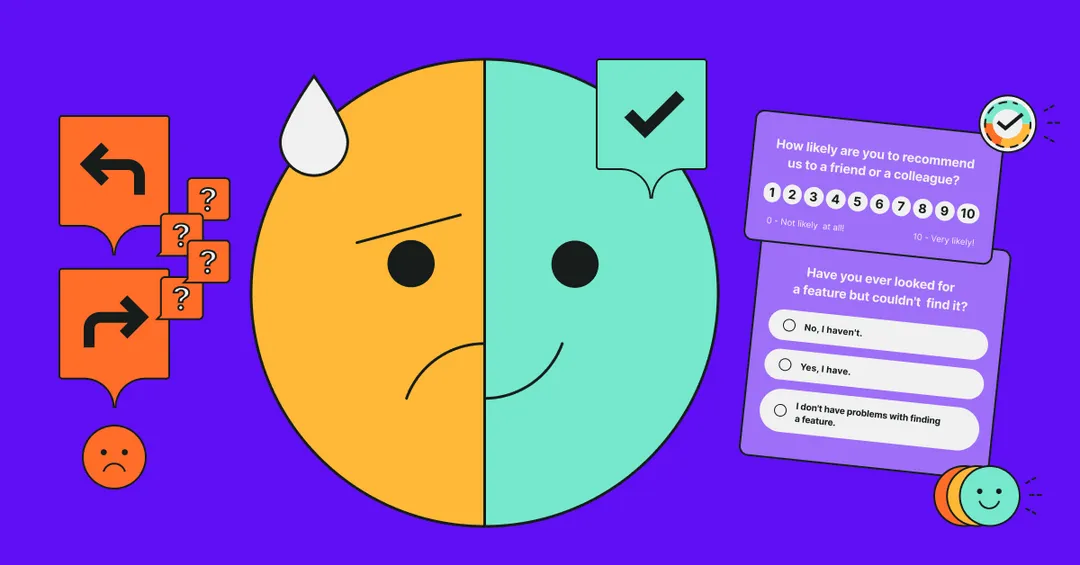A UX research roadmap can make or break your project. It’s a key artifact that organizes and prioritizes all your research activities, so any inconsistencies or inaccuracies can lead to delays, unnecessary spending, and poor product decisions.
In this blog post, we will demystify the process of creating an effective UX research roadmap. We'll show you how to set clear objectives, choose the right research methods, develop a timeline, and design meaningful deliverables so that you can start your user research project with confidence.

What is a UX research roadmap?
A user experience (UX) research roadmap is a strategic artifact that outlines the plan for user research over a certain period. It's an essential tool for UX researchers and design teams to align their activities with the overall business goals.
A typical UX research roadmap includes the research objectives (what you're aiming to understand or uncover), research methods (how you'll conduct the research), key milestones and timelines, stakeholders involved, and the expected deliverables.
While a UX research roadmap should be comprehensive and well-planned, it also needs to be flexible to accommodate changes or new findings that might emerge during the research process.
How to create a UX research roadmap
Each UX research roadmap is different. However, there are certain elements that each of them should contain.
Research objectives
User research objectives are the specific goals or questions that you aim to answer through your user research activities.
They should be:
- specific: clearly defined so that everyone understands what the research will focus on;
- measurable: they should be easy to measure so that you can gauge whether the objective has been met;
- actionable: the results should lead to insights that can inform design decisions.
Here are a few examples of user research objectives:
- understand user behavior and discover how they interact with your product or service;
- identify user needs and preferences to determine what they expect from your product;
- evaluate usability and identify any areas for improvement;
- explore user motivations and pain points to understand why they behave the way they do and what problems they face;
- test specific features or changes and gather feedback;
- benchmark your performance against your competitors or previous versions.
Whichever objectives you pick, make sure they’re understandable to the stakeholders and they align with your business goals.
Research methods
The research methods and tools you pick will largely depend on your research objectives, the available resources, and the stage of the product development process. You might want to try a combination of methods to get a well-rounded understanding of your users.
Here are some commonly used user research methods.
- interviews
- surveys/questionnaires
- card sorting
- user journeys and experience mapping
- usability testing
- field studies
- ethnographic research
- contextual inquiry
- focus groups
- diary studies
Surveys provide quantitative data that can be easily analyzed to identify patterns, trends, or correlations among user responses. Net Promoter Score is one of the most widely used satisfaction surveys, and it’s not limited to user research:
Stakeholders
These are the people who have a vested interest in the research outcomes, and they could include:
- product managers
- designers
- developers and engineers
- marketing teams
- sales teams
- senior management and executives
- customers
- investors
Timeline
Creating a timeline is a crucial aspect of planning your user research. It will help you make sure you complete all the tasks you need on time and that your findings are delivered when they can be most useful for decision-making.
When drafting a timeline, take into account your research objectives, tools and methods, and the resources available to you.
Map out individual tasks by breaking each research activity into smaller pieces so that you can estimate the time you’ll need to complete them.
You can then sequence the tasks and determine the order in which they need to be performed.
Don’t forget to allocate some time for analyzing and reporting the findings of your research in your estimate. And, finally, build in some buffer time to handle any unforeseen circumstances.
Deliverables
User research deliverables are the tangible outcomes of your research process. They can include
- research reports
- journey maps
- user personas
- usability test reports
- affinity diagrams
- wireframes and prototypes
The deliverables serve as records of the insights you gained during the research and can be used to inform and guide design decisions.
You’d typically share them with various stakeholders, including product managers, designers, developers, copywriters, and company executives.
The benefits of creating a UX research roadmap
Crafting a UX research roadmap is a strategic decision that can bring substantial benefits to your project, from helping you use your resources effectively to fostering closer inter-team collaboration.
Clear direction and focus
A UX research roadmap provides a clear direction for all your research activities.
It outlines your research objectives, the methods you will use to achieve those objectives, the timeline for your research, and the deliverables you will produce.
This clarity helps to keep your research aligned with your business and product goals as well as ensures that everyone involved is on the same page.
Efficient use of resources
A roadmap allows you to plan your research activities in advance, which can lead to more efficient use of resources.
By outlining your research methods and timeline, you can anticipate what resources you will need at different stages of your research, such as personnel, time, and budget. As a result, you will avoid last-minute scrambles for resources, reduce waste, and ensure that your research goes smoothly.
Stakeholder buy-in
A UX research roadmap can help you communicate the value of your research to stakeholders, leading to better buy-in.
By clearly articulating your research objectives, how they align with business or product goals, and how your research will achieve those objectives, you can demonstrate the value of your research and make a stronger case for its importance.
This can help you secure the necessary resources for your research and ensure that your findings are taken into account in decision-making.
Prioritization and planning
When you map out your research objectives and methods over time, you can prioritize research activities based on their relevance and importance to your business or product goals.
As a result, this will ensure that you carry out critical research at the right time and within the agreed timelines without overlooking any smaller tasks in the process.
Knowledge sharing
One of the great benefits of a UX roadmap is that it can help you get all stakeholders, from designers to executives, on the same page. It also helps maintain a user-centered focus and improves collaboration.
Accountability and tracking progress
With a roadmap, you can track progress against your planned research activities. It allows for accountability, as you can clearly see what has been accomplished and what remains to be done. This can be useful for managing your research team, reporting to stakeholders, and ensuring that your research stays on track.

Collect insights across the entire user journey with Survicate
Creating a robust UX research roadmap is an essential step towards driving impactful, user-centered design decisions.
Within your roadmap, surveys can play a significant role in gathering valuable user insights.
And, with tools such as Survicate, you can you can automate the data gathering process to give yourself more time to focus on strategic analysis and delivering an outstanding user experience.
To get started with your first survey, simply sign up for free, choose from among dozens of ready-made templates (or create your own from scratch) and watch user feedback roll in. 🚀













.webp)
.webp)
.svg)

.svg)



